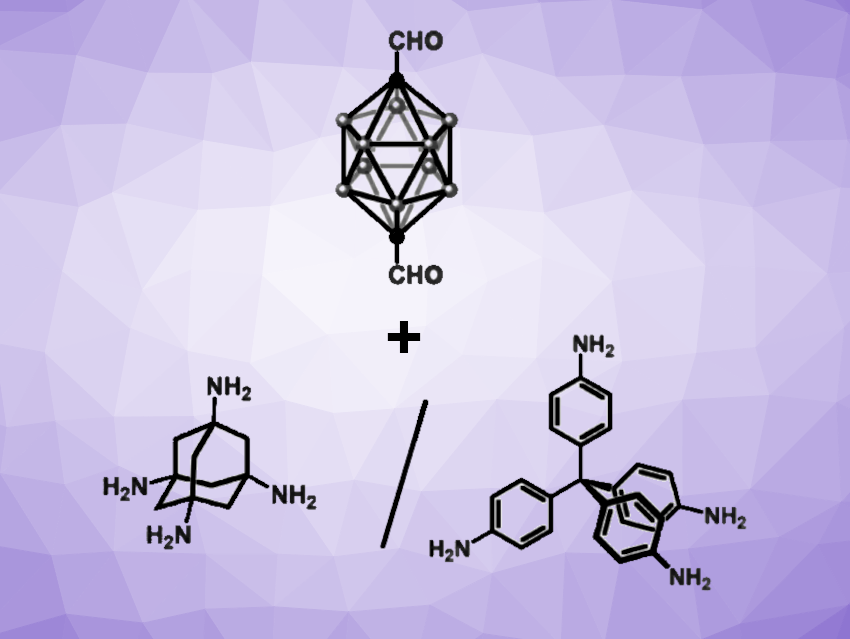Covalent organic frameworks (COFs) are porous crystalline networks made from organic building blocks. They can be useful, e.g., in gas adsorption/separation, sensing, or catalysis. New types of COF can be developed by combining different types of building blocks and using different types of covalent links. Using new types of compounds as building blocks, in particular, could lead to new structures and possible applications. Icosahedral carboranes (C2B10H12), for example, are stable clusters that could provide useful properties for the separation of alkane isomers via dihydrogen bond interactions between the negatively polarized hydrogen atoms of the carborane and positively polarized hydrogen atoms of alkanes.
Ning Huang, Zhejiang University, Hangzhou, China, and colleagues have developed a new type of three-dimensional carborane-based COF. The team reacted diformyl-p-carborane (DFCB) with either 1,3,5,7-tetraaminoadamantane (TAA) or tetra(4-aminophenyl) methane (TAPM), using aqueous acetic acid as a catalyst in a solvent mixture of o-dichlorobenzene (o-DCB) and n-butanol (n-BuOH) at 120 °C. The carborane derivative is connected in a linear manner, while the amines serve as tetrahedral building blocks.
The resulting COFs (TAA-DFCB-COF and TAPM-DFCB-COF) were obtained in yields of 66 % and 83 %, respectively, and characterized using powder X-ray diffraction (PXRD). The team found that the COFs show high crystallinity, porosity, and robustness and feature channels enclosed by densely packed carborane units. The carborane content of the COFs reaches over 54 wt% for TAA-DFCB-COF, which is higher than those of other carborane-based porous materials, according to the researchers. The synthesized COFs can be used as efficient adsorbents for the separation of a mixture of hexane isomers.
- Carborane-Based Three-Dimensional Covalent Organic Frameworks,
Xiaoyi Xu, Qirui Cui, Hongzheng Chen, Ning Huang,
J. Am. Chem. Soc. 2023.
https://doi.org/10.1021/jacs.3c08541

![Synthesis of [c2]Daisy Chains via Mechanochemistry](https://www.chemistryviews.org/wp-content/uploads/2025/04/202504_RotaxanesWithSolidStateMechanochemistry-125x94.png)

